This is a list of Associated Equipment Company (AEC) and London General Omnibus Company (LGOC) buses from 1909 to closure in 1979.
Contents

This is a list of Associated Equipment Company (AEC) and London General Omnibus Company (LGOC) buses from 1909 to closure in 1979.



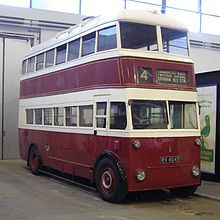

A double-decker bus or double-deck bus is a bus that has two storeys or decks. Double-deckers are primarily for commuter transport, but open-top models are used as sight-seeing buses for tourists, and there are coaches too for long-distance travel. They appear in many places around the world but are presently most commonly used as mass transport in cities of Britain and Ireland, in Hong Kong, and in Singapore.

Associated Equipment Company (AEC) was a British vehicle manufacturer that built buses, motorcoaches and trucks from 1912 until 1979. The name Associated Equipment Company was hardly ever used; instead, it traded under the AEC and ACLO brands. During World War One, AEC was the most prolific British lorry manufacturer, after building London's buses before the war.

Seddon Atkinson Vehicles Limited, was a manufacturer of large goods vehicles based in Oldham, Greater Manchester, England, was formed after the acquisition in 1970 of Atkinson Vehicles Limited of Preston by Seddon Diesel Vehicles Limited of Oldham. In 1974, the firm was acquired by International Harvester, which sold it in March 1984 to the Spanish group Enasa which made it a subsidiary of Pegaso. In 1990, it became part of Iveco which used the brand for various types of specialised vehicles in the United Kingdom. The range of models produced included EuroMover, Pacer and Strato, which are aimed at refuse collection, recycling and construction operators.
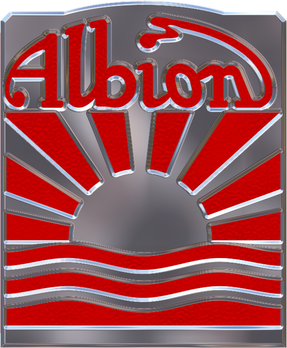
Albion Motors was a Scottish automobile and commercial vehicle manufacturer.
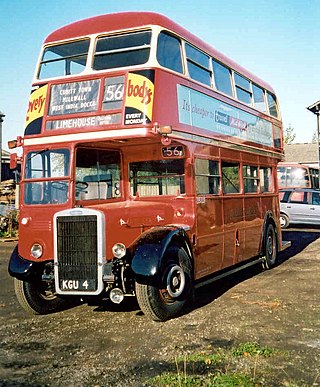
The Leyland Titan was a forward-control chassis with a front-mounted engine designed to carry double-decker bus bodywork. It was built mainly for the United Kingdom market between 1927 and 1942, and between 1945 and 1969.

Duple Coachbuilders was a coach and bus bodybuilder in England from 1919 until 1989.

Guy Motors was a Wolverhampton-based vehicle manufacturer that produced cars, lorries, buses and trolleybuses. The company was founded by Sydney S. Guy (1885–1971) who was born in Kings Heath, Birmingham. Guy Motors operated out of its Fallings Park factory from 1914 to 1982, playing an important role in the development of the British motor industry.

The AEC Q-type is an AEC-built, side-mounted-engine, single- and double-decker bus that was launched in 1932.

The AEC Regal VI was an underfloor-engined single-decker bus chassis manufactured by AEC in the 1960s. It was unveiled at the 1960 Commercial Motor Show and was intended to be a purely export chassis. It was an updated version of the underfloor-engined AEC Regal IV, having an 11.3-litre AH690 engine instead of the Regal IVs 9.6-litre AH590 engine. It was available in both left and right hand drive versions, other options included power assisted steering and air suspension.
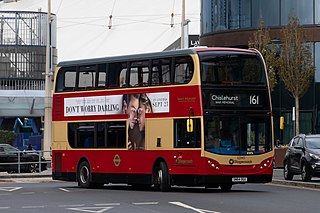
South East London & Kent Bus Company Limited, trading as Stagecoach London, is a bus company operating in central and south London and some parts of north-west Kent. The Selkent brand is a subsidiary of Stagecoach London and operates services under contract to Transport for London. The Selkent brand is not publicly used since 2010 as all buses are branded as Stagecoach, but it exists as a legal entity.

Charles H Roe was a Yorkshire coachbuilding company. It was for most of its life based at Crossgates Carriage Works, in Leeds.
A lowbridge double-deck bus is a double-decker bus that has an asymmetric interior layout, enabling the overall height of the vehicle to be reduced compared to that of a conventional double-decker bus. The upper-deck gangway is offset to one side of the vehicle, normally the offside, and is sunken into the lower-deck passenger saloon. Low railway bridges and overpasses are the main reason that a reduced height is desired.
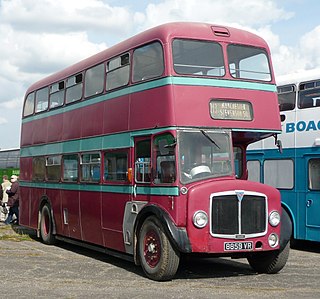
The AEC Regent V was a front-engined double-decker bus built by the Associated Equipment Company between 1954 and 1969. It was the last AEC Regent series double-decker model, and was the successor to the AEC Regent III.

The Daimler Freeline was an underfloor-engined bus chassis built by Daimler between 1951 and 1964. It was a very poor seller in the UK market for an underfloor-engined bus and coach chassis, but became a substantial export success.

The Leyland Tiger was a heavyweight half-cab single-decker bus and coach chassis built by Leyland Motors between 1927 and 1968, except the period of World War II.
H. V. Burlingham was a British coachbuilding business based in Blackpool, Lancashire from 1928 until 1960 when they were taken over by London-based rivals Duple Motor Bodies. Duple initially renamed Burlingham as Duple (Northern) but in 1969 they closed their Hendon factory and concentrated production in Blackpool. Duple coach bodies were built in the former Burlingham premises until Duple itself was liquidated in 1989.

The Leyland Royal Tiger Worldmaster, sometimes simply known as the Leyland Worldmaster, was a mid-underfloor-engined single-decker bus or single-decker coach chassis manufactured by Leyland between 1954 and 1979.

The London Bus Museum is a purpose-built transport museum, open daily to the public and located at Brooklands in Weybridge, England. Entry is on a joint basis with Brooklands Museum.
The AEC Renown was the name given to three distinct forward control bus chassis manufactured by the Associated Equipment Company (AEC) at different periods between 1925 and 1967. All were of the front-engine, rear-wheel-drive layout. The first and third types had two axles, the second had three. Each was intended to be fitted with bodywork by an outside coachbuilder – single deck for the first type, double deck for the third, whilst the second could be bodied in either form.